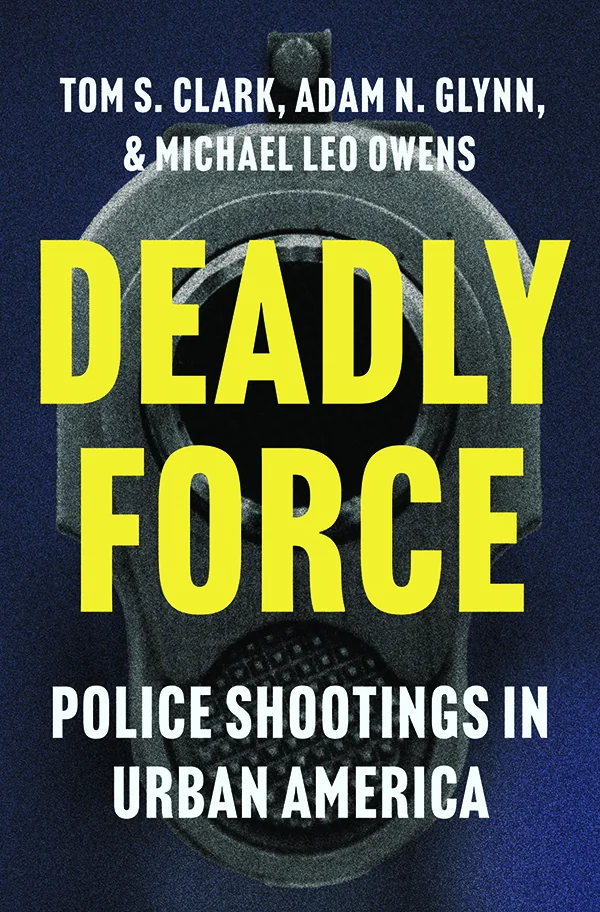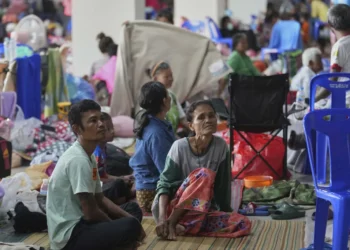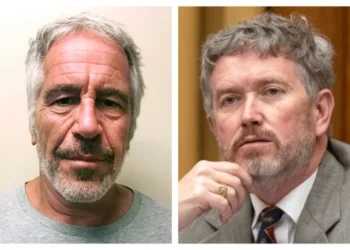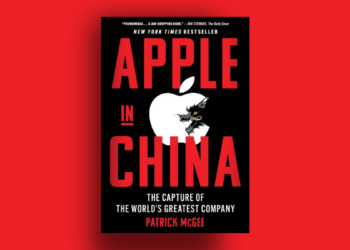It’s now been more than a decade since the death of Michael Brown, and half a decade since the death of George Floyd, two incidents that thrust police officers’ use of force into the national spotlight, led to protests and riots, and reinvigorated long-standing debates about whether police are biased against black people.
And yet, still in 2025, those trying to learn the truth about race and policing are hampered by a lack of data. In our high-tech and civil-liberties-conscious country, one imagines there would be comprehensive public information on police shootings, at minimum containing the who, what, where, when, and why of each case. In reality, federal efforts to track these incidents are spotty at best and improving only slowly, and it’s fallen to private projects such as the Washington Post’s “Fatal Encounters” to collect better numbers, relying largely on news reports. Incidentally, “Fatal Encounters” includes only fatal shootings, as the name implies, and the paper discontinued it this year.
In their new book, Deadly Force, academics Tom S. Clark, Adam N. Glynn, and Michael Leo Owens inject a wealth of new information into the discussion. They sent Freedom of Information Act requests to hundreds of urban departments throughout the country, seeking data on all police shootings, including the nonfatal ones.

The new data are extremely welcome, though their own analyses of the records are open to debate, particularly concerning their claim to have documented “unjustifiable disparities in police shootings” by race. Importantly, however, the authors have made their numbers public so skeptical readers can dig deeper. In other words, the authors’ project doesn’t merely contribute to an important debate on its own, but also enriches that debate moving forward.
The authors’ quest for police records proved frustrating. Some departments complied quickly and provided detailed information, but others ignored requests, replied only after repeated prodding, or didn’t keep very good records on the people they shot to begin with. Some tried to charge the authors tens of thousands of dollars, or insisted that record requests could come only from state residents, forcing the authors to find local help. In the end, the researchers have information from about 200 urban departments covering cities of at least 100,000 in population, though they initially sought records from around 300, and the cities varied in terms of how much detail they provided.
After all this effort, one major conclusion is that a lot of police shootings, 58% of them, are not fatal. On top of that, fatality rates vary immensely by city. Around half of the shootings were fatal in Dallas, versus one-fifth in Pittsburgh. If one focuses on fatal shootings, in other words, one misses more than half the picture and ignores significant differences across places.
Other interesting findings include that black officers are overrepresented among those involved in shootings, and that a higher percentage of those they shoot are black, though this likely reflects the neighborhoods that such officers are assigned to or choose to patrol. The “defund the police” crowd might be puzzled to learn that places with better-staffed police departments have, if anything, fewer police shootings, and that the political partisanship of a city’s voters doesn’t seem to make much of a difference.
The authors square up to the elephant in the room, the racial bias question, in a series of later chapters. The heart of the problem is this: It’s one thing to say a given police shooting was unjustified or that a specific person is racist, but it’s quite another to show systematic racial bias in overall data.
It’s not as simple as pointing to a racial disparity. For example, we’ve long known, based on “Fatal Encounters” and other sources, that black people are disproportionately killed by the police: They are roughly 13% of the general population and around 25-30% of those fatally shot. However, black people make up an even higher share of homicide offenders, around half, so it’s unclear whether the disparity stems from bias or simply reflects similar disparities in serious violence. Meanwhile, studies using more detailed and advanced methods to detect bias reach varying conclusions, and they often focus on a single department or a nonrepresentative set of them.
The Deadly Force data fall between the two extremes: They don’t cover the whole country like “Fatal Encounters,” and they don’t contain an extremely detailed account of every incident. But they do encompass a whole lot of urban departments and include the nonfatal shootings that others ignore. The authors offer several analyses of their data to suggest it provides new evidence of bias.
In one of the book’s most striking charts, for example, the authors show that as the black percentage of a city’s criminal offenders rises, the black percentage of those shot by police rises far faster. If a city’s offenders are 25% black, those shot by police are nearly 50% black on average. There’s a big caveat here, though: The offender numbers come from police departments’ crime data, but offenders’ races are not known for many crimes, and the authors include unknown offenders in the denominators when calculating the percentages. For example, if half of the offenders’ races are unknown, and half of the known offenders are black, that is counted as just 25% of the offenders being black. Reanalyzing the data, I found that the black share of offenders and police shooting subjects track each other quite closely with the unknown races removed.
In a different, if conceptually similar, analysis, the authors look at smaller bits of geography: Census tracts in a handful of cities with exact location data. They unsurprisingly find that police shootings are more frequent in tracts with more violent crimes, but also that this relationship is exaggerated in heavily black tracts, even after accounting for some other factors, such as poverty. Among places with high levels of violent crime, in other words, police shootings are significantly more frequent in those that are also heavily black.
There’s a key nuance to consider here, too: “Violent crimes” range from assaults to murders, and tracts with similar levels of overall violent crime can have different levels of the most serious violence. An anecdotal comparison the authors make is instructive.
They note that Tract 2.03 in Austin, Texas, toward the north, and Chicago’s Tract 2518, on the west side, both have high violent crime. However, the Austin tract is majority-white, while the Chicago neighborhood is mostly black. The former experienced no police shootings in the time frame for which the authors have data, but the latter experienced six. However, the authors themselves observe that assaults dominate violent crime in the Austin tract, and that in the Chicago tract, “Robberies and murders, too, are more common than in the typical city neighborhood.”
Here’s a starker way to put it: Consulting several data sources going back 15 years, including the authors’ public files, their underlying source, and the online crime-mapping tools provided by the two cities, I couldn’t find any homicides in the Austin tract — despite the large number of assaults, many of which come from the address of a psychiatric hospital located there. Meanwhile, the Chicago tract averages multiple homicides annually, a shockingly high rate of lethal violence for a place whose population is around 5,000. Both tracts have violence, certainly, but of markedly different kinds.
A third argument for racial bias that the authors offer is more unusual. Recall that many police shootings are nonfatal, and that there’s a lot of variation in fatality rates. The authors posit that threat level is a key variable: The fact that someone lived after being shot could, to some extent, be a hint that they didn’t need to be shot at all. Shootings of armed people are more likely to be fatal, for example, 47% for those with guns vs. 29% for those with no weapon of any kind.
Applying this insight to race, the authors note that black people shot by police are less likely to die than white people — 37% vs. 51%. Interestingly, there are still disparities when limiting the data to either armed, 42% vs. 55%, or unarmed, 22% vs. 47%, people. Might black suspects be more likely to survive because they pose less of a threat when police open fire? While it’s counterintuitive to treat a lower chance of death as evidence of bias, it’s certainly a clever argument that deserves to be addressed, and the survival gap among the unarmed is especially striking.
AN ORAL HISTORY OF CRIMEFIGHTING THAT WORKS
The major limitation, pending more detailed research, is that plenty of variables besides threat level certainly contribute to the chance of a fatal as opposed to nonfatal shooting, including the distance at which the encounter takes place, the lighting, the reason the officer believes there to be a threat, whether the subject ceases to be a threat when struck nonfatally, and the healthcare available. The authors statistically control for some relevant details, such as crime rates, the size of the local police force, and the person’s age, and find that a large gap persists — but many readers will remain less than convinced.
As it happens, Deadly Force comes out at a low ebb for the police bias debate, with the Floyd incident receding into the national memory and, perhaps relatedly, the murder rate plummeting after its 2020 spike. But if history is any guide, the issue will roar back eventually, when another controversial police killing takes the media spotlight. Clark and his co-authors have done the public a service in unearthing so much previously unavailable information, analyzing it themselves, and publicly releasing the data for others to learn from as well. Solving this problem will require a much better understanding of it than we have.
Robert VerBruggen is a fellow at the Manhattan Institute.

















